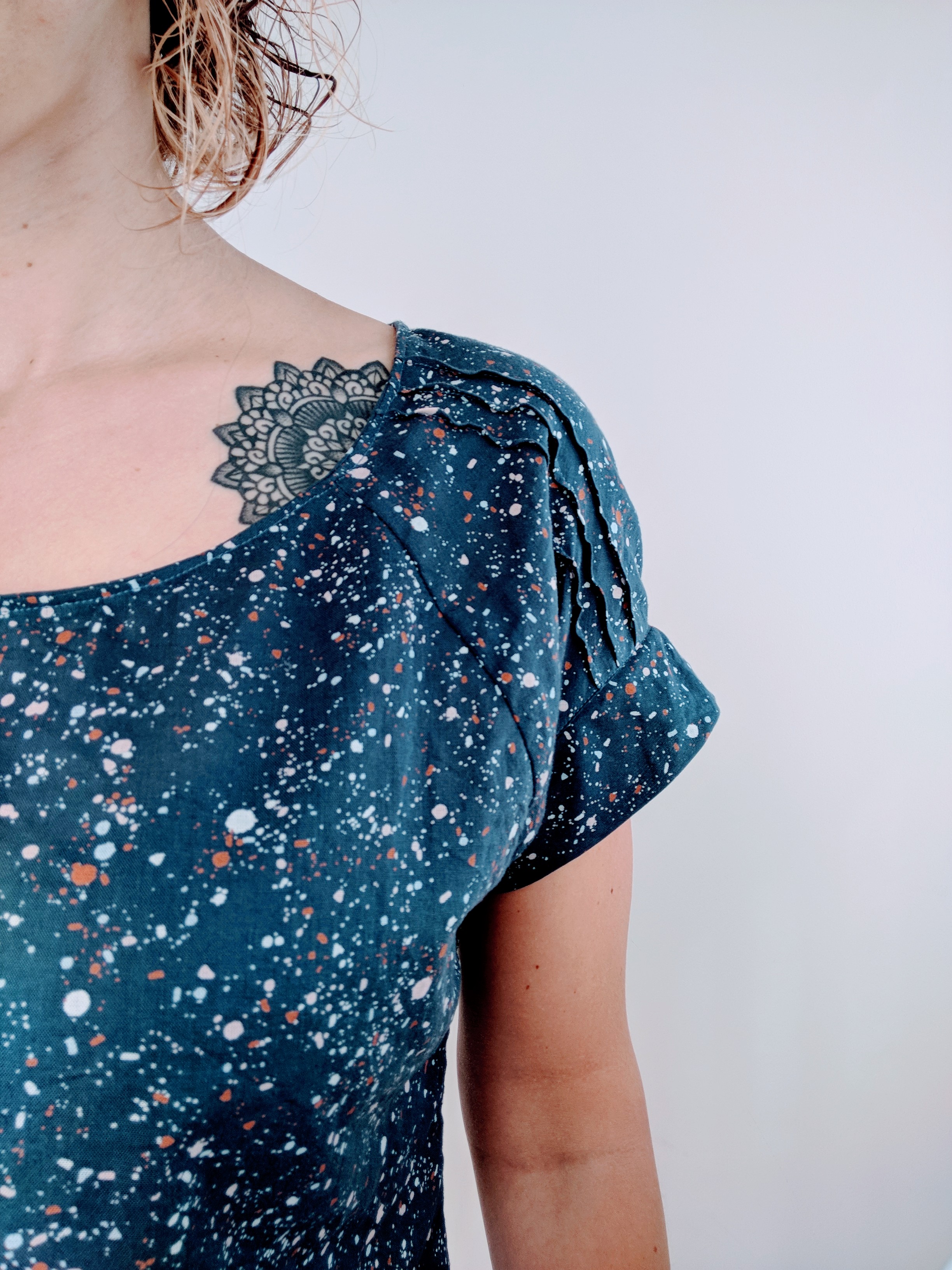You’ve found a sweater you want to knit. The perfect yarn. And you’ve chosen the right size to knit. But you really should knit a swatch first.
I have to admit when I am about to start a sweater the thought of holding off while I knit a swatch is not at all appealing. However, knowing that if I don’t I might be ripping back hours (if not days!) worth of work later on does encourage me to do it. It’s not as fun as getting started on the sweater, but if you weigh that against how frustrating it will be to have spent weeks or months of time on something that doesn’t fit…
There are a few key bits of information to help you knit a useful swatch:
Make a big enough swatch
You’ve convinced yourself to do a swatch so do yourself a favour and make it big enough to be useful. There are two main ways I’d suggest getting a useful sized swatch.
1. Make it using the exact same stitch and row count as the 4″ pattern gauge is.
When blocked this will give you a very good indication as to whether your gauge is right on target (is it 4″ x 4″?) or if you’re a bit tight or loose. Do not add garter or other stitches around the edge in an attempt to prevent rolling because these stitches can distort the stitches next to them giving you a false reading. Instead, use pins but make sure you don’t stretch the fabric out, just enough that it won’t keep rolling in on itself (mostly a factor if it is a stockinette swatch).
2. Make a big massive momma of a swatch.
This is the way I try to do it when time and my patience allows. Using enough stitches & rows to make a swatch at least 6.5″ x 6.5″ will give you plenty of information. It will let you take measurements from several different spots along the swatch to see if your gauge is consistent.
I will typically take a stitch count measurement in 3 spots along the swatch. All on different rows, and different left to right sections. If the stitch count is the same in all 3 I move onto measuring row gauge, otherwise I’ll continue to measure a few more spots and see what my average is. Using one rouge stitch count could really offset your whole sweater. You might also find your tension is tighter or looser near the edge and if you only have a small swatch this will affect the gauge you use for your main garment.
Try a couple different needle sizes
The point of a swatch is to make sure your yarn and needle size get gauge. If it doesn’t you’ll have to try another needle size. If you know you are generally a tight or loose knitter you might want to try a second swatch at the same time in a larger or smaller needle size and then throw it in the sink to block with the other one. I find this also will prevent the “oh, it’s a bit small but I can’t be bothered to knit another swatch” Or “the next needle size up will be fine…” scenario. It happens. And it hasn’t usually worked out for me 😛
Label your swatches
There are a few tips I’ve read about how to keep your swatches labelled so you can tell which one used which needle. If I’m only knitting 2 swatches I mark one of them with a removable stitch marker at the corner. Remember to note somewhere which one has the stitch marker, you would be surprised at how easy it is to forget what seemed obvious the previous day. Another method is working a purl bump or ‘yarn over’ near the corner. This gives you a tally to show the needle size (4 yo’s = size 4 needle). Although, you would only want to do these techniques if you’re going with the massive momma swatch so you don’t change the dimensions of your measurable swatch area.
Treat it like you will the finished sweater
Your swatch is like a little version of your sweater. If you don’t wash and dry it the same way you will your sweater it won’t be very useful in showing you how much your sweater will change. There will be different factors in why your sweater might still grow more than expected. For example, the full weight of the sweater pulling it downwards overtime. The best thing you can do is to wash your swatch as you’ll be treating your main garment. If you’ll be a daredevil stress-free knitter who will be putting it in the washing machine then throw your swatch in with a load of laundry. It needs to go through the same experience as your sweater will. This goes the same for drying. Whether it will be a drying rack or the dryer, put your swatch through the same paces your sweater will be.
And finally, use the same needles as you will be using on the sweater (nickel plated/wood/acrylic
The smoothness/friction differences in these materials really can make a difference in your final tension.
Checking your gauge before starting a sweater is definitely a worthwhile investment of time. If you are going to invest your time in knitting a sweater you will want it to fit!
Hopefully these tips get you on your way to making a useful, worthwhile swatch!
















